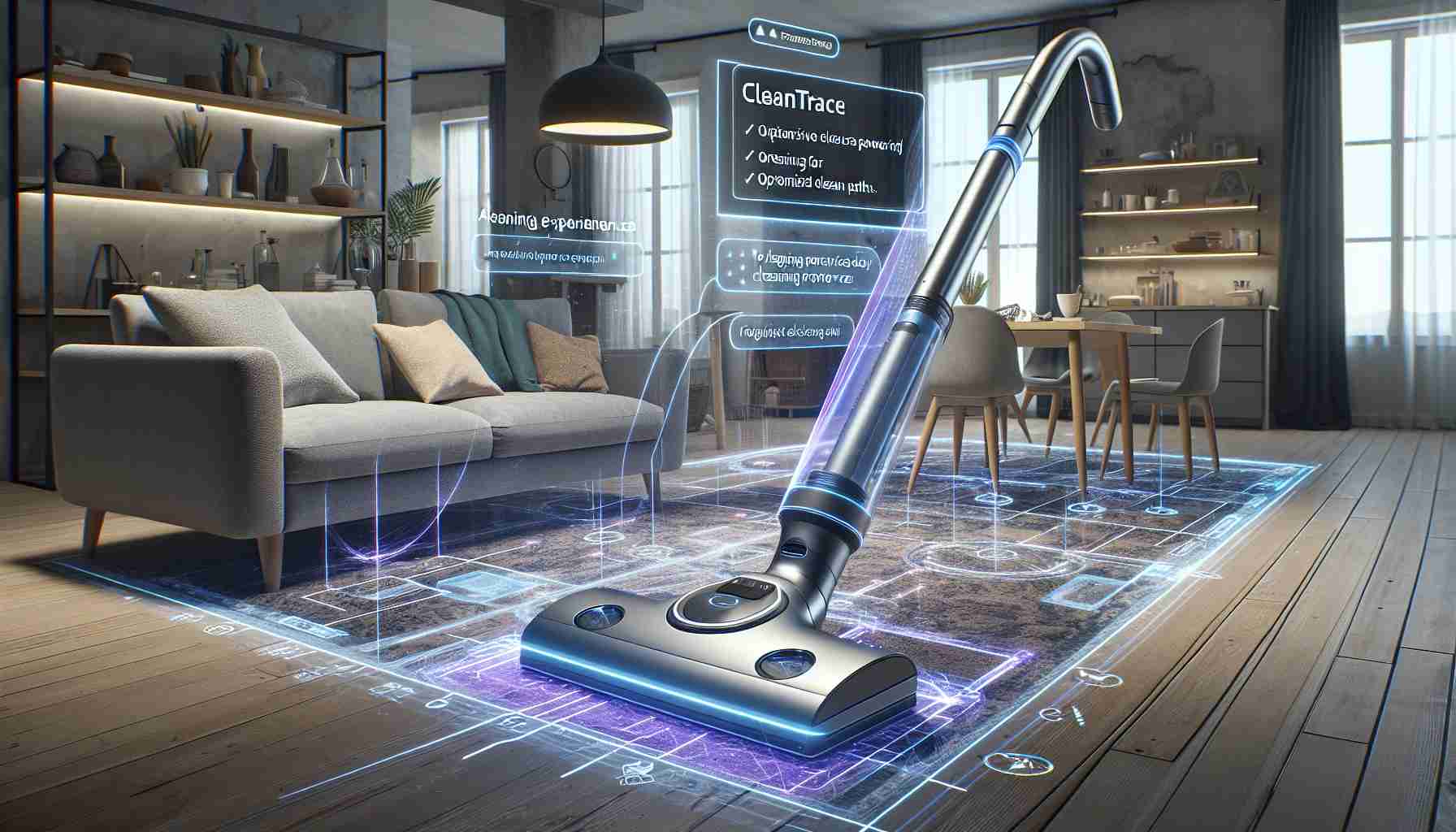Dyson is introducing a novel way to enhance the housekeeping experience by integrating augmented reality into their latest vacuum model. In an attempt to gamify cleaning, Dyson’s new CleanTrace feature allows users to virtually highlight cleaned areas through an app, promising to ensure thoroughness in household chores. This functionality, however, is restricted to those who have the latest iPhone Pro series equipped with a lidar scanner and are willing to invest in Dyson’s premium Gen5detect stick vacuum, priced at $1,000. Though Dyson will be rolling out the feature within its mobile app as a complimentary update this June, the required smartphone clamp will add to the overall cost, with pricing details yet to be announced.
The genesis of CleanTrace is rooted in an apparent human tendency to clean inconsistently, as suggested by data Dyson collected analyzing consumer cleaning habits. Dyson’s Gen5detect vacuum already incorporates features like a green headlight to help users spot dirt and debris. The addition of CleanTrace offers another level of verification, despite certain obscurities as to how it will employ vacuum-generated data to reinforce cleaning assurance.
This innovation from Dyson sets itself apart by requiring considerable investment not only in their own upscale vacuum model but also in the latest Apple smartphone technology, limiting accessibility for the general consumer. While it capitalizes on the capabilities of AR for a more interactive and accurate cleaning process, it contrasts sharply with more affordable and autonomous robot vacuums that require less personal effort. Whether this feature will eventually cross over to other models or brands remains to be seen, but for the time being, Dyson’s CleanTrace represents a luxurious, if niche, advance in household technology.
The Integration of Augmented Reality in Home Appliances
Dyson’s innovative introduction of augmented reality (AR) into the vacuum cleaner market can be seen as part of a broader industry trend where smart home devices are becoming more interactive and sophisticated. The global smart home appliance market has been on an upward trajectory, with research indicating a strong market growth forecast. Analysts predict that the adoption of smart home technologies could reach significant figures by the end of the decade, as consumers become more attuned to the convenience and efficiency offered by connected devices.
The introduction of Dyson’s CleanTrace feature touches upon the intersection of AR technology and the home appliance industry, which is still relatively nascent. This convergence could pave the way for further innovations where appliances not only perform their tasks but also provide users with data-driven insights and enhanced user experiences through immersive technologies.
Market Forecasts and Industry Adaptation
The potential consumer interest in AR-integrated home devices presents a substantial opportunity for market growth. Companies that adopt such technologies are positioned to benefit from early-mover advantages as they cater to tech-savvy homeowners looking for cutting-edge products.
As the technology continues to develop and costs potentially decrease, it is conceivable that more brands might follow suit, incorporating AR features into their products, which could democratize access to these innovative functionalities. This could also lead to a diversification of the range of household products featuring AR, extending beyond vacuum cleaners into other areas of home maintenance and improvement.
Issues and Challenges
Despite the promising outlook, there are challenges faced by this segment of the industry. The high cost of entry, as exemplified by Dyson’s Gen5detect and the latest iPhone Pro requirement, can be a significant barrier for widespread adoption. Moreover, the reliance on specific hardware means that the feature’s accessibility is limited, potentially alienating a segment of the market not prepared or unable to invest in the necessary technology.
Additionally, there are practical concerns pertaining to the efficiency of the AR experience during cleaning, which could include battery life limitations, ease of use, and the actual added value to the cleaning process. Consumers might weigh the benefits of interactive cleaning against more passive alternatives, such as robotic vacuums, which offer convenience without the need for active participation or high-end smartphones.
The intersection of AR technology and home appliances may also raise questions about data privacy and security, as more personal information and household data are collected and processed by these devices.
Related Information and Links
For more insights into emerging smart home technologies, you may visit the official main domains of companies and research institutions at the forefront of smart appliance innovations, like:
Information regarding market trends and forecasts for the smart home industry can often be found via market research firms and technology news outlets, providing regular updates and in-depth analyses of consumer electronics and future technology trends.
The source of the article is from the blog trebujena.net

